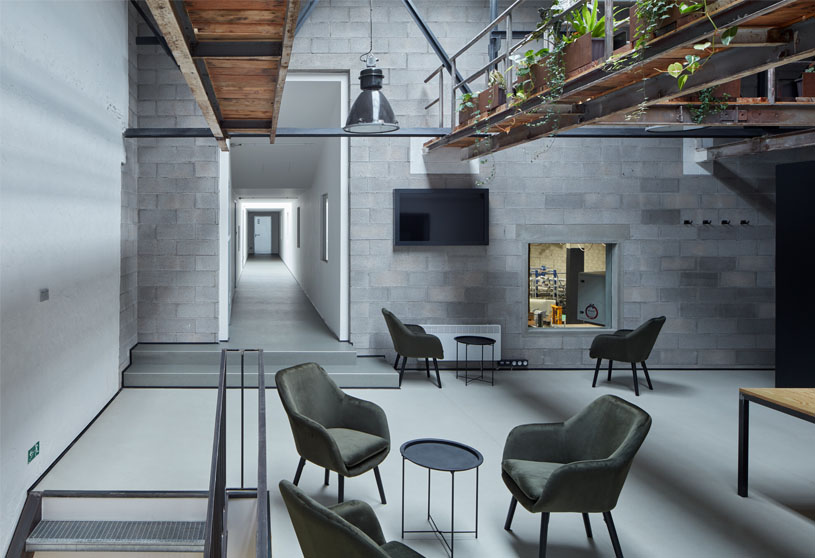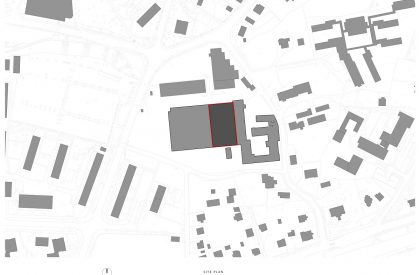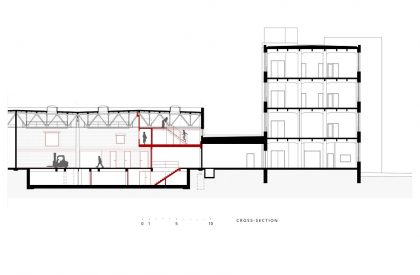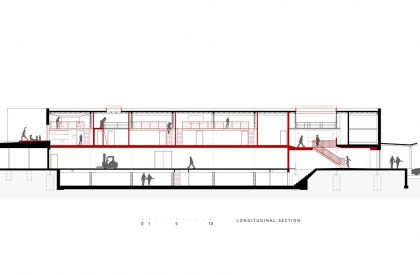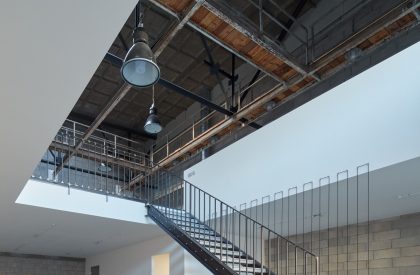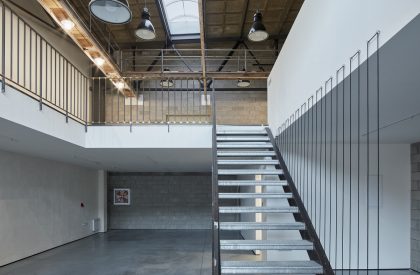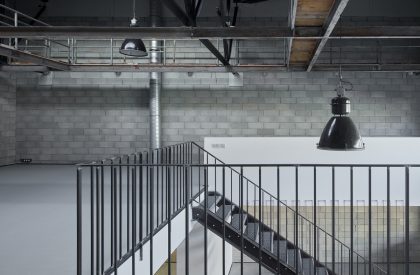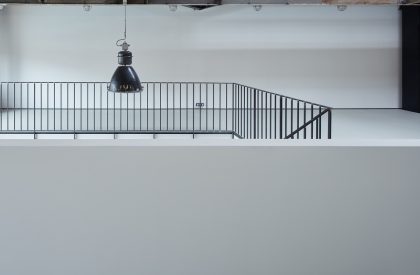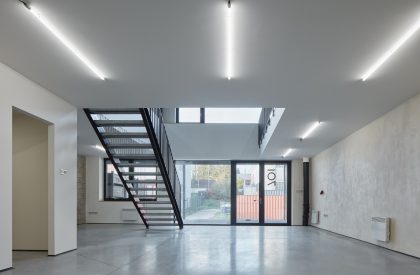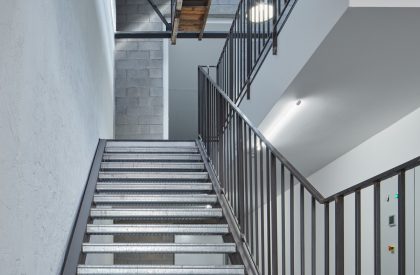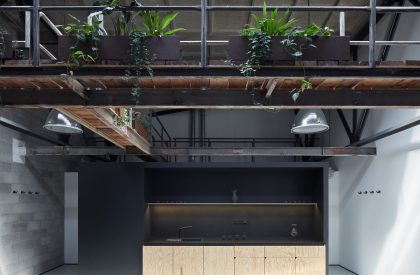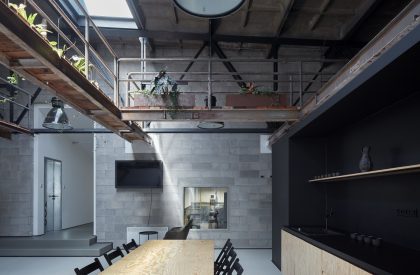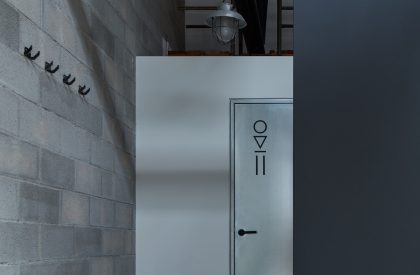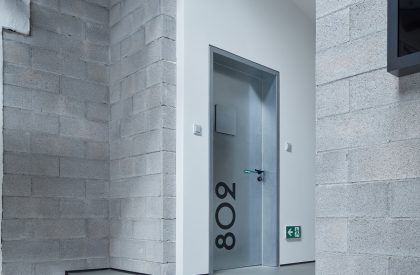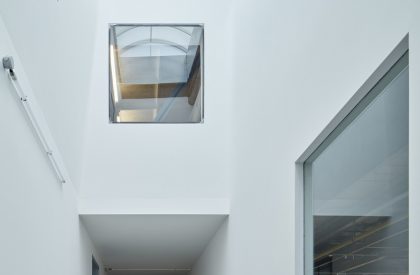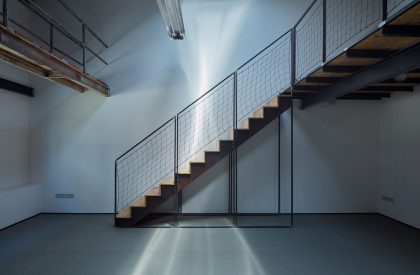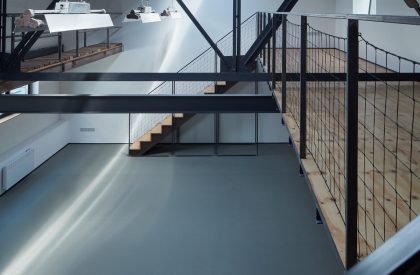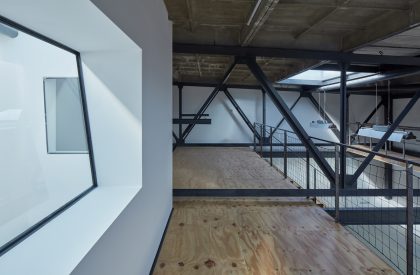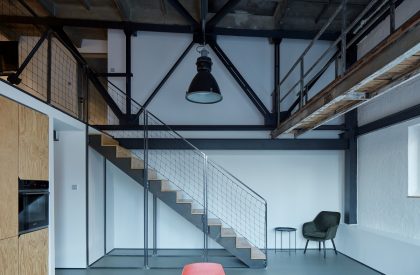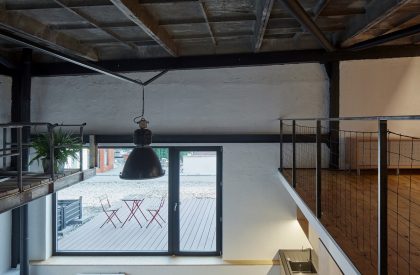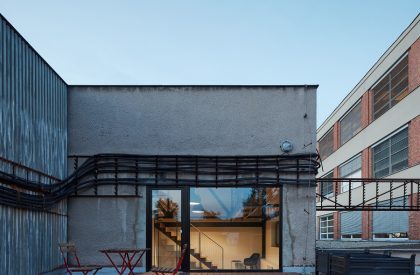Excerpt: Baverna is a commercial interior design project by Henkai Architekti, is composed of two individually accessible units – large and small. The small, single-storey unit is designed to accommodate a shop or an office. The large unit is a two-storey space suitable for a workshop, office, café etc. The aim is to find the right balance between the old and the new. That is why the space arrangement follows the old building’s layout. The building does not necessarily get a new character. Adapting just a little on the outside, it features new openings in the façade.
Project Description
[Text as submitted by Architect]
Barevna (dye works house) in context
In 1892, a Vienna-based company Brill, Schreiber and Co. founded a hosiery factory in Rožnov. The textile production of the later Loana factory finished in 2010, and since then, individual buildings of the factory complex have been adapted to a new purpose. The factory’s location allows for a partial yet significant urban opening of the complex to the surrounding town. Its new function already mixes light production with administrative offices, shops, services and housing.
One of the buildings (with a design unusual for this region) is a multi-storey factory from the late 1930s. From 2011, it has housed STROZA, a company focusing on the development and production of complex, single-purpose machines. The investor’s philosophy was to create a living building. One part of the building has been adapted to satisfy the investor’s needs for production and office spaces, and a whole floor has been turned into rooms for creative ateliers with a DIY gallery. Designed by the Henkai architectonic studio and known as 3. Etáž, this space has become a part of the local cultural life.
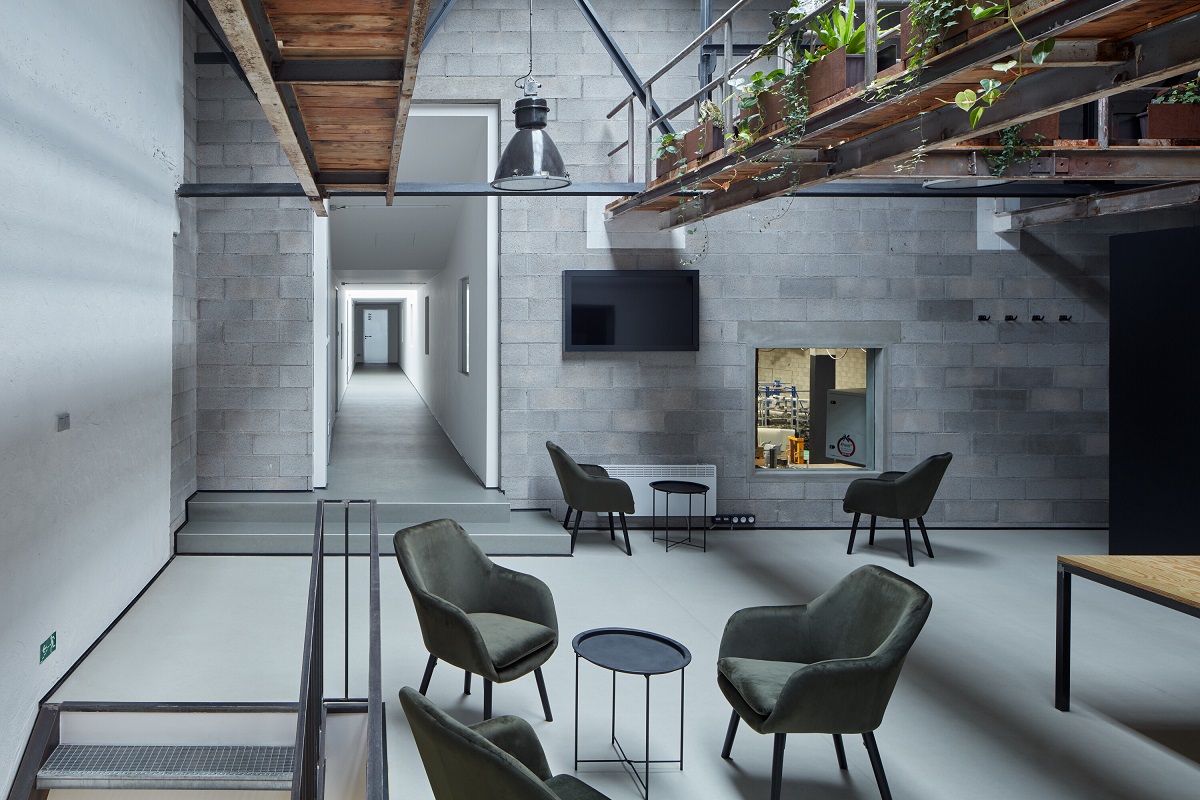
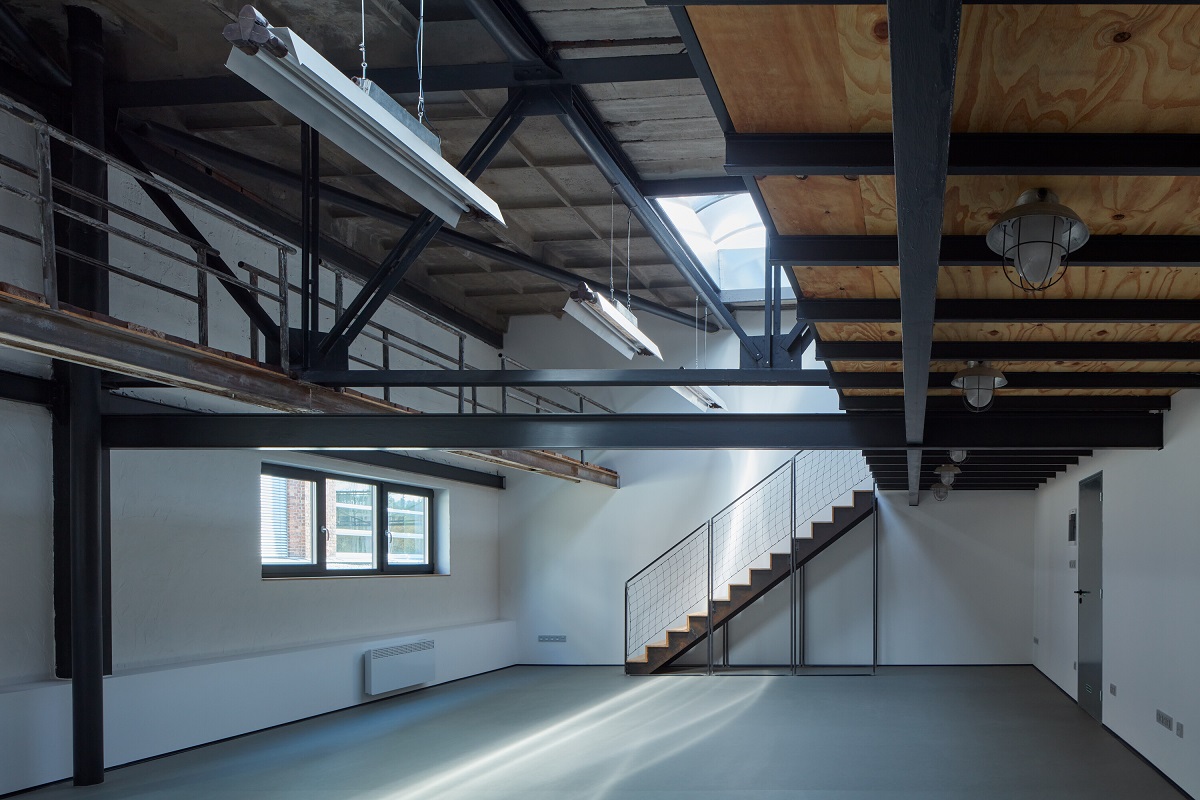
A need for production expansion led the investor to buy a part of an adjacent building from the 1970s, where a dye works house used to be based. Continuity of the conversion approach led to expanding the production and making inevitable changes to the original building. At the same time, there was an opportunity to add new functions to this space. To breathe new life into yet another part of the complex. To support the symbiosis of the light industry with the daily working life of the town. Resulting from this strategy is another piece to the mosaic, a space called Barevna. The focal point of this project, is the same as in the previous one of 3. Etáž, is a significant form of the building’s construction. It forms an industrial aesthetic framework, which is being left to display together with some parts of the building’s rawness. The aim is to find the right balance between the old and the new. That is why the space arrangement follows the old building’s layout. The building does not necessarily get a new character. Adapting just a little on the outside, it features new openings in the façade. The main scene takes place inside. The project is part of a gradual adaptation with new layers springing up from the old foundation. It may be less centrally controlled but probably natural. The whole complex is slowly falling into fragments while a new town is emerging.
Barevna
The front façade of the house features a ramp with steel columns supporting its roofing. These elements form the entrance space, welcoming the passers-by to the new Barevna with workshops, ateliers, offices and a flat.

The central operating part is on the first floor. A common foyer and a hallway visually communicating with the production in a large shop floor form a pathway to individual ateliers and a flat in the back.
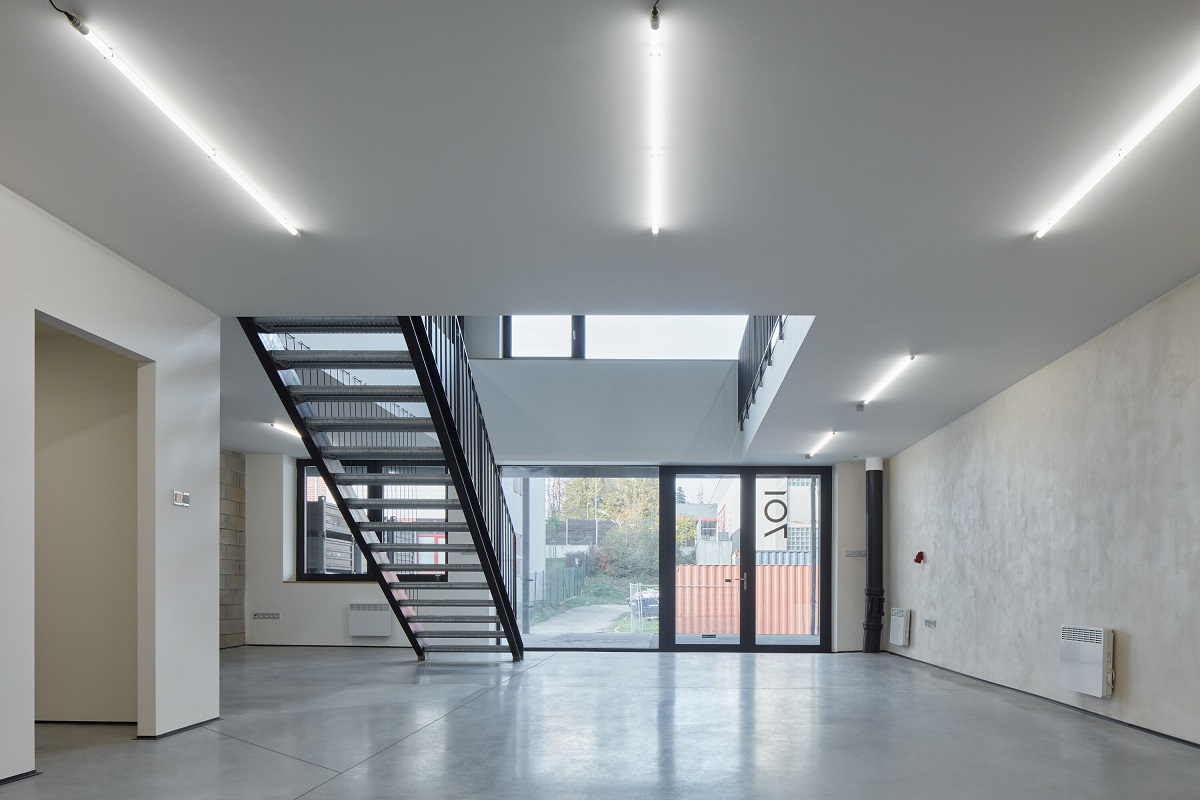
Barevna is composed of two individually accessible units – large and small. The small, single-storey unit is designed to accommodate a shop or an office. The large unit is a two-storey space suitable for a workshop, office, café etc.
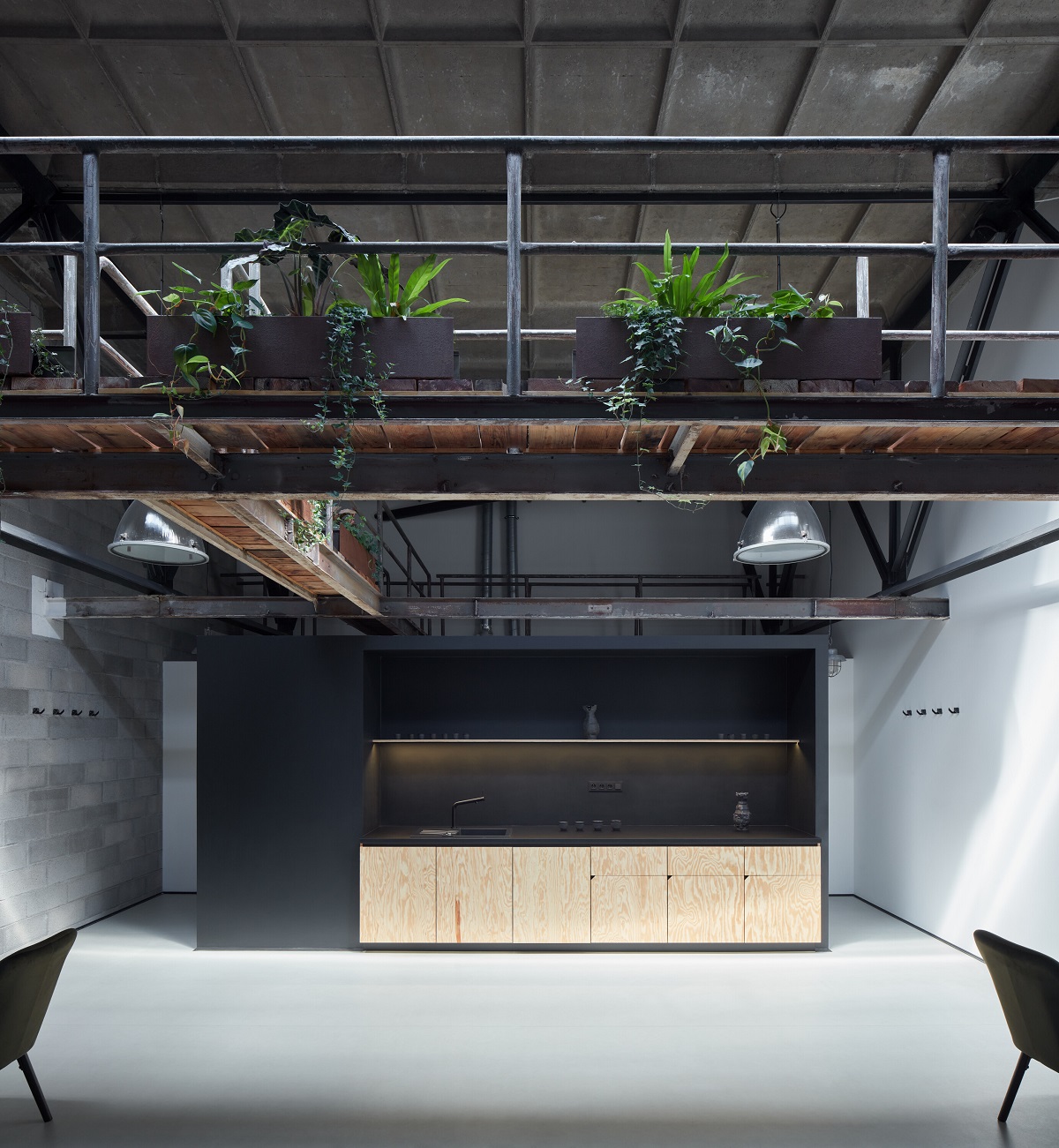
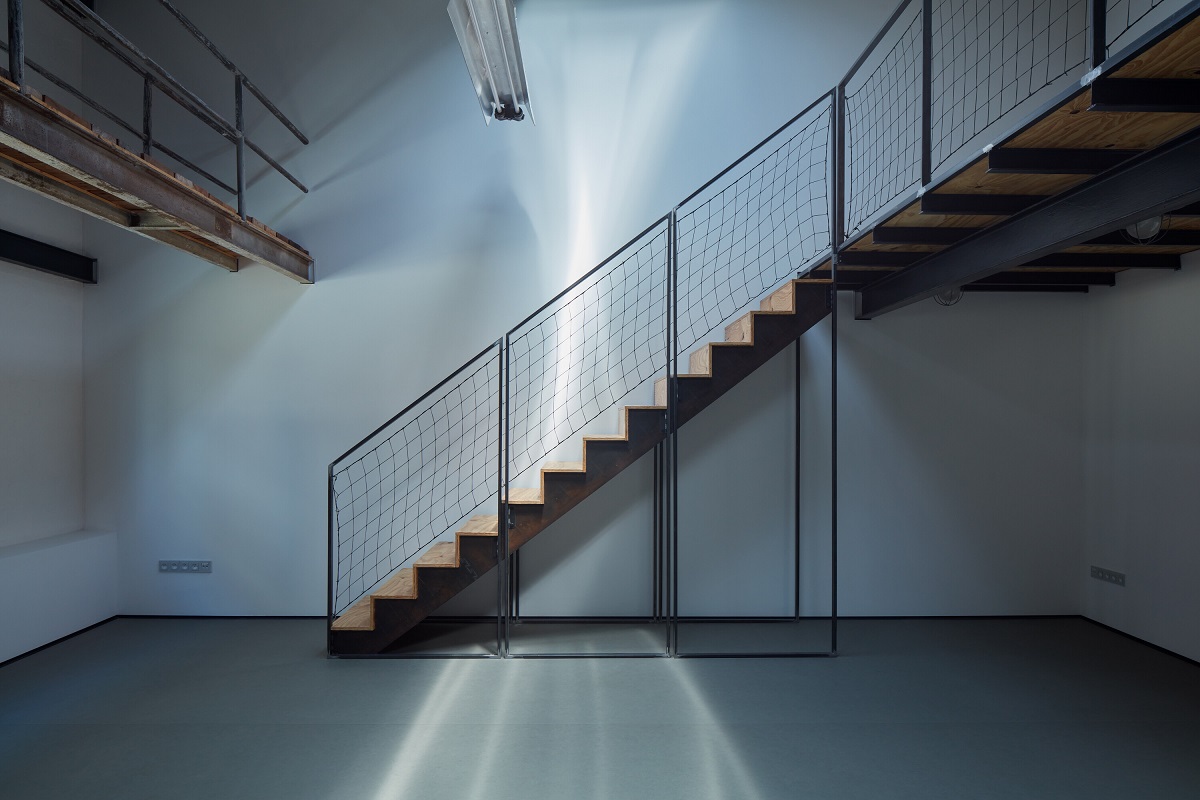
The ateliers and the mezzanine flat are illuminated by the façade windows and soft light from the skylights. Mezzanines in the ateliers allow direct contact with the steel structure of the roof trusses supporting prefabricated concrete roof panels.

The interior architecture is built into the existing, significant structure of the industrial shop floor, directly using the roofing’s aesthetic and space potential. The bearing structure, with its physioplastic form, represents a kind of natural interior decoration.
